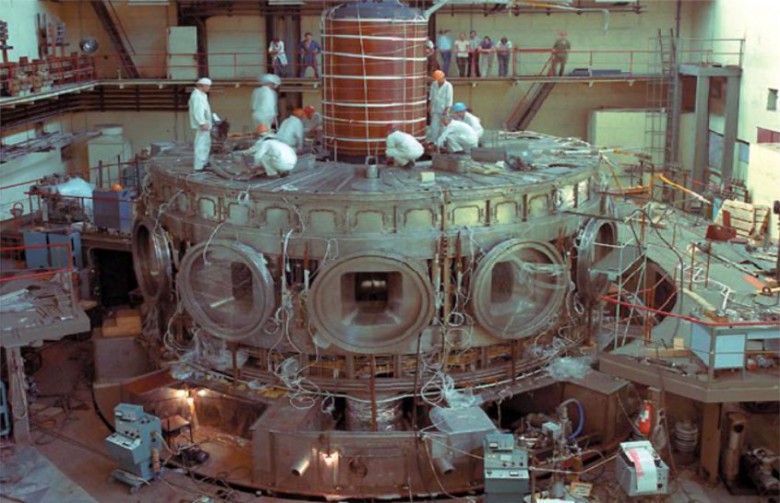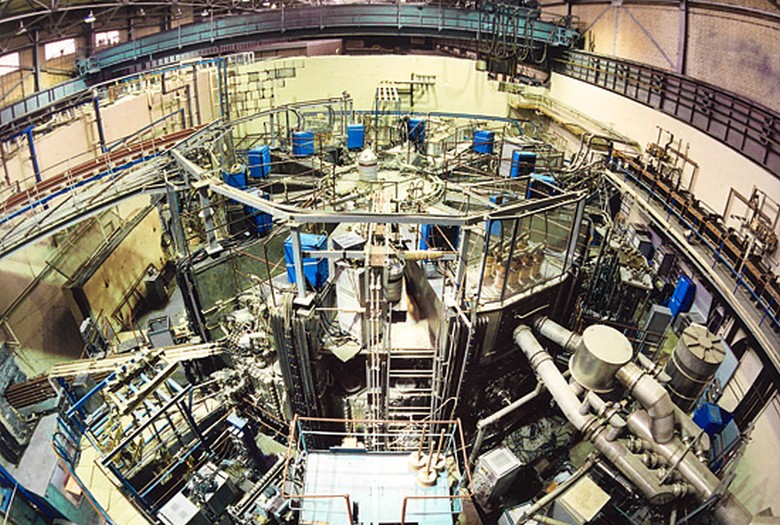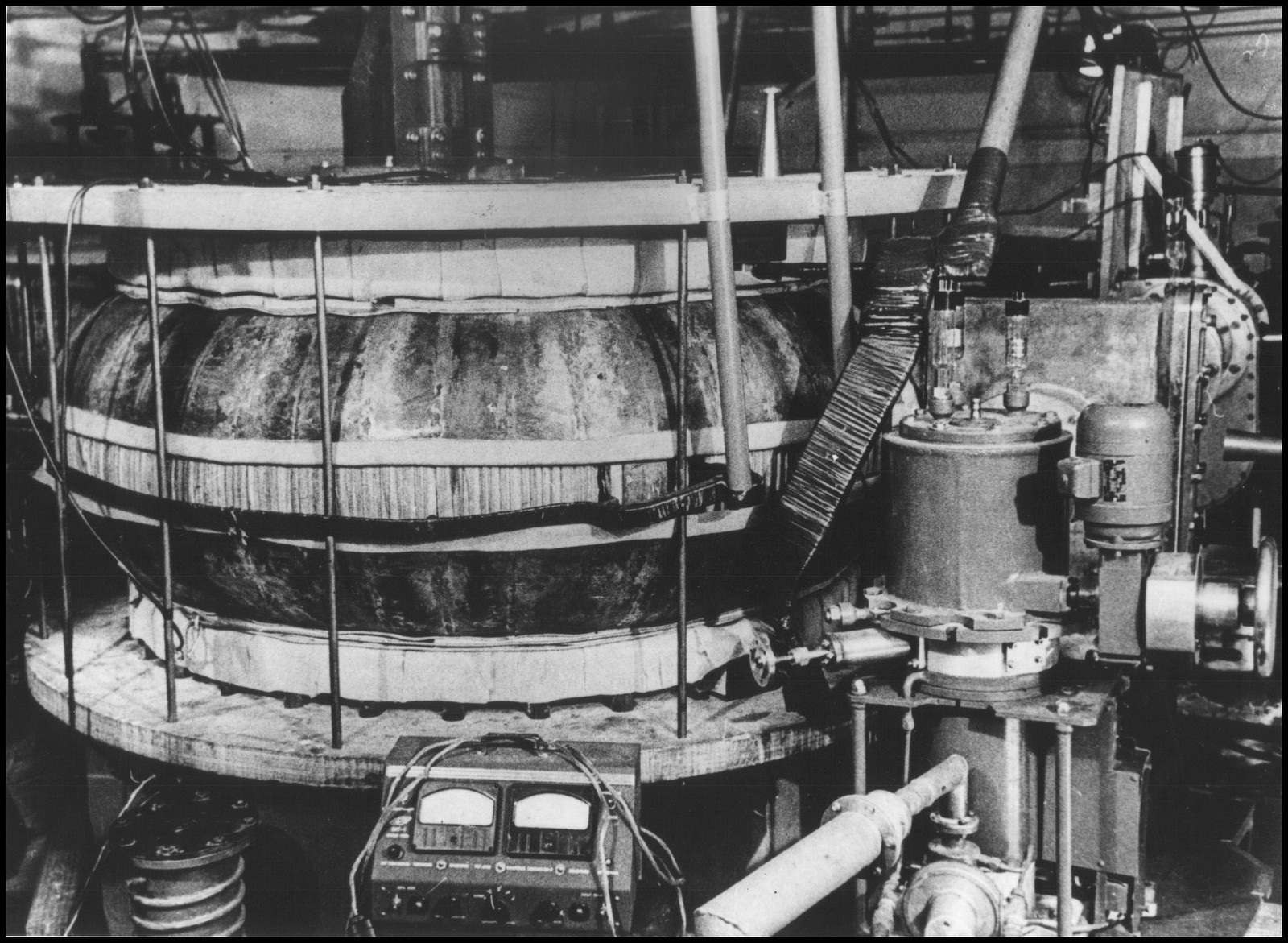 Installation of the central solenoid T-15, 80s
Installation of the central solenoid T-15, 80sThe Kurchatov Institute research center dismantled the old
T-15 research reactor in the building of the institute - and now a new hybrid installation is being built on its foundation.
“The hybrid tokamak is now called T-15MD. This is a big installation, at the end of the year we have to assemble it on the site of the old T-15 in this building [Kurchatov Institute]. We have dismantled the [old installation], we are building a new one on its foundation, ”
said Peter Khvostenko, the scientific director of the Kurchatov complex of thermonuclear energy and plasma technologies.
A new reactor will be assembled by the end of 2018, with a physical launch scheduled for 2020. It will work out the technologies "that are necessary for a thermonuclear neutron source specifically for a hybrid reactor."
T-15 at one time it became one of the world's first prototypes of an industrial thermonuclear reactor, which uses superconducting magnets to control plasma. A reactor with a standard toroidal chamber with a large radius of 2.43 m and a small radius of 0.7 m demonstrated that Soviet physics was on the right path to obtaining a fusion pool.
 Tokamak T-15 - toroidal installation for magnetic plasma confinement. Designed by Vasmily Andreevich Glukhikh (now Academician of the Russian Academy of Sciences)
Tokamak T-15 - toroidal installation for magnetic plasma confinement. Designed by Vasmily Andreevich Glukhikh (now Academician of the Russian Academy of Sciences)The T-15 received the first fusion plasma in 1988 and continued to work until 1995.
Experimental Thermonuclear Reactors
Controlled thermonuclear fusion is a real holy grail for energy. If physicists learn to keep the plasma in a magnetic trap and spend less energy on the magnets than is released as a result of the reaction, then mankind will receive an almost inexhaustible source of clean energy, and it will be possible to forget about fossil fuels from hydrocarbons and uranium . According to the estimates of scientists, humankind will only have enough reserves of 50–70 years for uranium-235 reserves, so it’s now irrational to build new NPPs of the usual type.
It is obvious to some specialists that the
future lies in thermonuclear fusion . Attempts to create a working fusion reactor were made repeatedly. Since 2007, the construction of the ITER (International Thermonuclear Experimental Reactor) has been underway, but the project has been significantly outdated by $ 5 billion, and the deadlines have been repeatedly postponed.
The USSR is one of the organizers of the ITER project, now Russian scientific organizations are responsible for the manufacture of 25 systems. The integration center for foreign participants of the ITER project is the Institute of Nuclear Physics (INP) of the Siberian Branch of the Russian Academy of Sciences; elements of components manufactured in different countries will be assembled and tested on its territory. The first plasma at ITER is planned to be obtained in 2025.
 The world's first tokamak T-1 built in 1954
The world's first tokamak T-1 built in 1954Other experiments with thermonuclear fusion are underway. For example, at the Massachusetts Institute of Technology, together with Commonwealth Fusion Systems
, the construction of an operating prototype of a much smaller smaller fusion reactor (using a YBCO superconductor, yttrium – barium – copper oxide) is
underway . To begin with, MIT is going to manufacture a prototype 100 MW reactor of only 1/65 size from ITER in 10 years. It will produce energy in pulses of 10 seconds - heat is not planned to be converted into electricity, but scientists expect that the energy produced will be about twice as much as the cost of heating the plasma. Then, the construction of a 200 MW reactor will begin with a generator that supplies electricity to the network. If the project is completed successfully within the stated period of 15 years, then this may be the world's first actually working thermonuclear power station.
Together with renewable energy, thermonuclear energy is the real hope of mankind to meet growing energy needs.
There are
more than a dozen pilot projects in the world:
- Wendelstein 7-X
- MegaJoule Laser
- National ignition facility
- MagLIF fusion
- EAST (Chinese tokamak)
- Lockheed martin compact fusion
- Helion Energy
- Tri Alpha Energy
- General fusion
- First light
- Tokamak Energy ( English startup )
- Lawrenceville Plasma Physics
- and others
Hybrid Thermonuclear Reactor T-15MD
A hybrid thermonuclear reactor receives energy both from the decay of an atom (like an ordinary nuclear power plant) and from synthesis, that is, it combines the principles of nuclear and thermonuclear energy
The hybrid T-15MD tokamak will work on torii, which is cheaper, and its reserves are greater than those of uranium. Its main difference from a fusion reactor lies in the fact that in order to obtain energy a hybrid reactor does not need to obtain ultrahigh temperatures.
According to the
technical description , the T-15MD installation will have an elongated plasma cord configuration with an aspect ratio of 2.2, a plasma current of 2 MA in a toroidal magnetic field of 2 T with a quasistationary system of additional heating with a total power up to 20 MW. The installation is designed for a pulse duration of up to 30 s.
At present, work on the modernization of the T-15MD unit is being transferred to the phase of preparation for the physical launch of a tokamak.